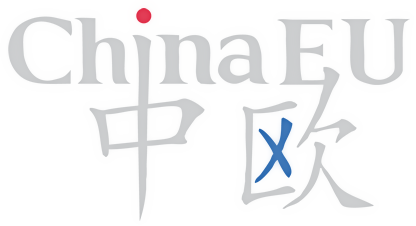Meet Matthew Brennan, Managing Director at China Channel
One week prior to the event “Understanding the Success of TikTok: the Most powerful Tool to Engage European Digital Natives”, CChinaEU spoke with Matthew Brennan, long-time digital China watcher and Managing Director at China Channel, to understand his journey into China’s mobile Internet landscape and unveil some of the most curious insights from his latest masterpiece “Attention Factory: The Story of TikTok and China’s ByteDance”.
Claudia: Matthew, you are an uncontested expert of Chinese mobile Internet. We met when you were digging into all things related to Tencent’s super app WeChat, of which you became the utmost reference point for Tencent’s non-Chinese fans. Among other things, you have also been co-hosting the weekly podcast China Tech Talk together with John Artman, touching upon all the latest Chinese tech innovations in an extremely informative way. Where does this passion for China’s mobile internet come from?
Matthew: In 2015 I walked into a 7-Eleven store in China and used WeChat pay on my phone for the first time to buy a sandwich, it blew me away. From that day on I decided to learn all I could about Chinese internet innovation and online platforms. The journey really started from there, the inspiration was the digital transformation happening in the Chinese society right before my eyes and all around me, it happened so fast and even from early on, it was clearly evolving very differently from the West. You can never be bored with covering Chinese internet stories, it changes so fast, the only problem is keeping up.
I had been based in China for already over a decade at that point and was already involved heavily in building EdTech products for the vast Chinese market. This gave me a huge advantage in understanding what was really going on and why and then communicating this to the rest of the world.
Claudia: Your latest book – Attention Factory – a must-read for everyone interested in understanding the phenomenon of ByteDance, TikTok, short videos, the evolution of recommendation-based Internet applications and e-commerce in general – is a deep dive into the world of ByteDance and how TikTok was born and grown. It is full of detailed analysis and background material that can hardly be found anywhere else. What brought you to write this book and how did you feed it with so many interesting facts?
Matthew: The book is the result of nine months full time writing and research conducted mostly in Chinese. I already had a good base to work from before starting as I had been a heavy user of Douyin, the original China version of TikTok, for several years already and saw the impact it was having on people. The product was compelling, there was nothing like it. ByteDance was a rising star for many years, I believe we covered them first on our podcast back in 2017.
My editor was Rita Liao, a Chinese professional journalist who writes for the respected American tech industry media TechCrunch. She has been an invaluable resource throughout the process and without her the book would not be what it is today.
Claudia: I have devoured your book in two days. If I were to pick three concepts that remained printed in my memory from my reading, I would recall the following ones: “machine-driven personalized recommendation system”, “growth hacking” and “cringe”. Could you explain in short these three recurring elements? How can they help explain the success of TikTok and define its future development?
Matthew: Machine-driven personalized recommendation system refers to the technology behind all of ByteDance’s flagship products including TikTok. To quote the head of the ByteDance AI Labs Lei Li: “We have built the largest machine-learning platform for content. That’s our weapon.” It’s the advantage that ByteDance holds, highly sophisticated personalization algorithms. This is what makes TikTok so addictive and the experience so personalized.
Growth hacking is another area the company excels at. Creating effective strategies to expand the user base of their products. We cover this in detail during several sections of the book looking at their earlier grow strategies which relied heavily on Android system app pre-installs. Later we look at how they broke into Western markets such as Europe with audacious big-spending on app install adverts.
“Cringe” refers to the early positioning of TikTok in Western markets. It’s hard to believe today, but the reputation of TikTok in late 2018 was awful. It was widely per¬ceived as being only for misfits and kids making lip-syncing videos. Most felt that the adults posting videos on TikTok were creepy and weird. The app was widely criticized and was not seen as a threat to anyone but itself. Yet those writing the platform off failed to anticipate how fast TikTok would change.
This is a little spoiler of what you will be hearing on 19th January. Only few days are left: make sure you get one of the few last early bird tickets by registering here.


